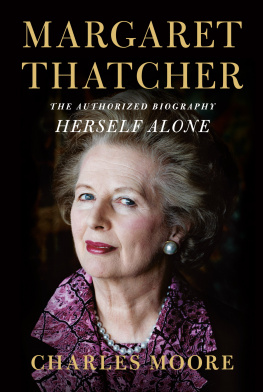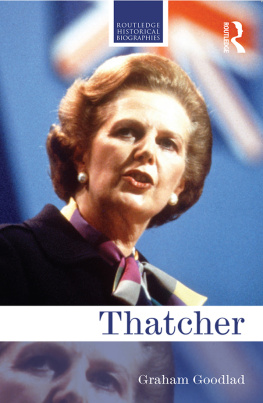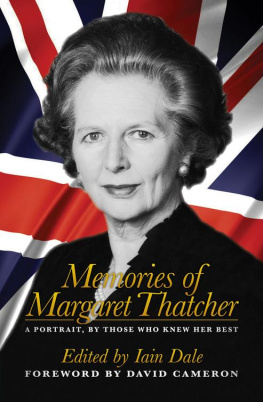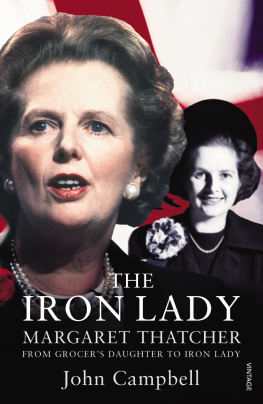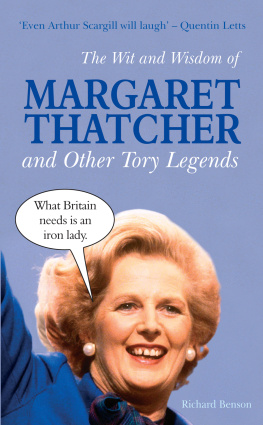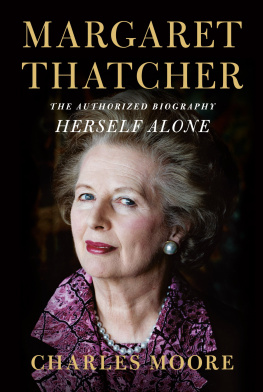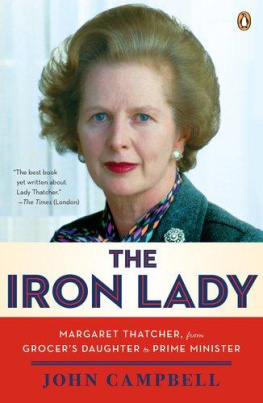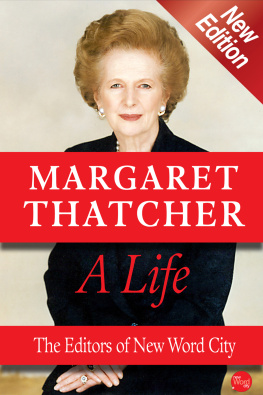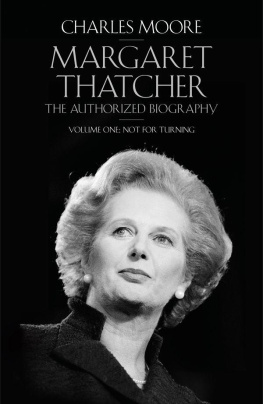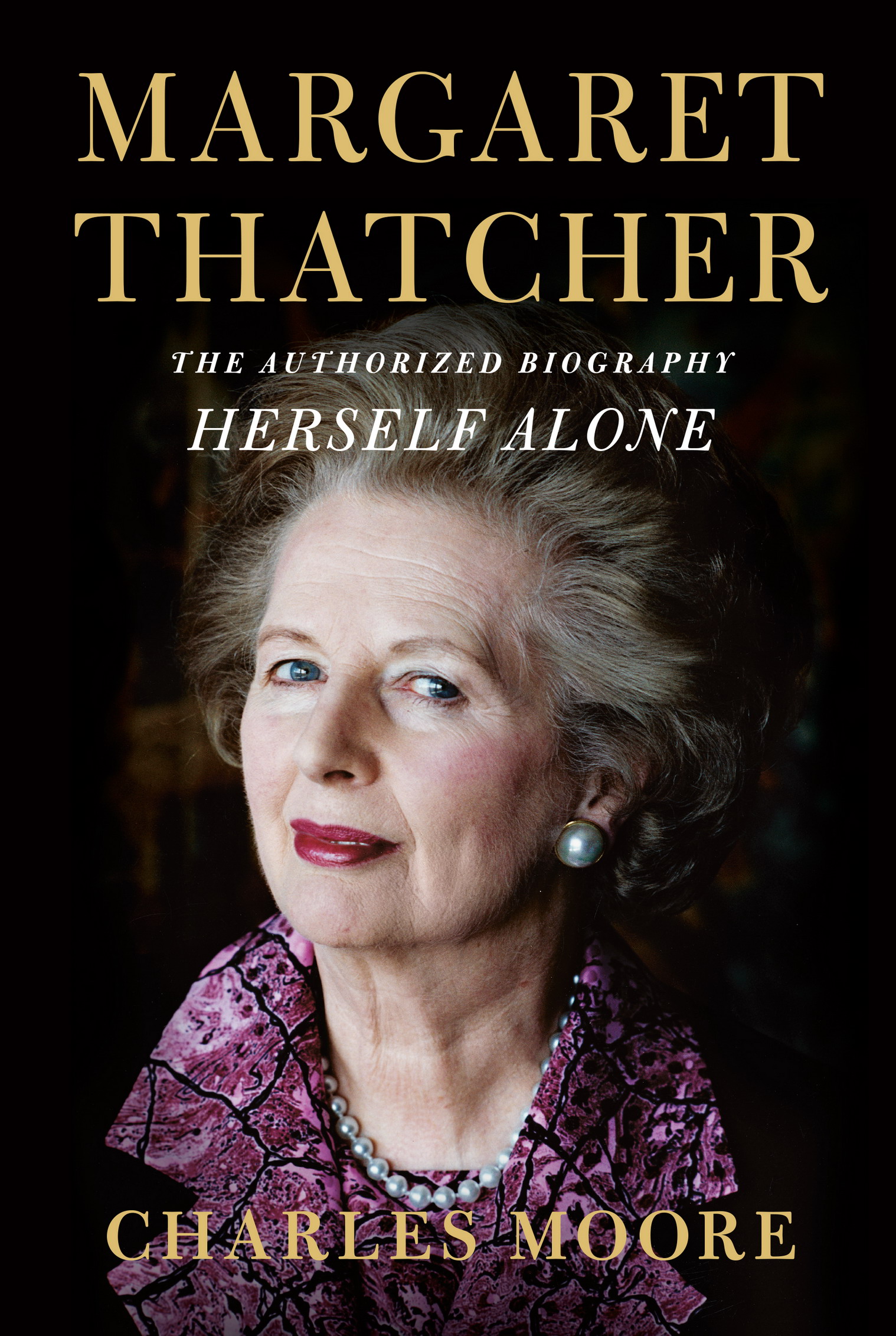Preface
This is the final volume of a trilogy. It has taken longer to write than its subject spent at the top of politics. I was first approached by Lady Thatcher to be her authorized biographer in 1997. The contract with the publisher, Penguin, was signed the following year. Lady Thatcher made it a condition that she should not read the manuscript and that the book should not appear in her lifetime. This was welcome, indeed essential, because it guaranteed the books independence; but it also meant that I did not know when my deadline would come. By the time she died in April 2013, the first volume which runs from her birth to victory in the Falklands War in 1982 was ready, and appeared at once. The second volume which covers the period from 1982 to her third and final general election victory in 1987 was partly ready, and was finished (just) in time for publication in 2015. The third volume was far from ready. Hence the gap of four years before its publication.
In the preface to Volume II, I explained to readers how the planned shape of the book had switched back and forth. I was contracted for three volumes. I later persuaded the publishers that two would be neater. But as I got to grips with the material for the later years of Mrs Thatchers time as prime minister, I realized that it was not possible to do it justice as well as covering the nearly twenty-three years of her life after leaving office in 1990 in a single volume.
This was for two reasons. The first is that Mrs Thatcher was the most intensely busy prime minister Britain has ever known, as well as the longest serving in the era of universal suffrage, so the amount of material is vast. The second is to do with the nature of authorized biography. It was my privilege, because of her authorization and the consequent permission of successive Cabinet secretaries, to see the full range of her papers, both government and personal the former held, unless and until transferred to the National Archives at Kew, in HM Treasury, the latter chiefly in the Thatcher Archives in Churchill College, Cambridge in many cases before the papers were released for public view, and in some where they have not been released at all. So I have had to make sure that this range is reflected in the text and that the story is told more fully than in a standard political biography.
Luckily, the great accumulation of material does provide, I believe, the best path towards understanding Mrs Thatchers style of government. More than any other before or since, she was master of the detail which appeared in the famous red boxes she worked on each night, often until two in the morning. She enjoyed political gossip, but it was the paper, rather than plotting on the sofa or discussion in Cabinet, which she saw as her primary means of governing. On it, she wrote the trenchant comments which her private secretaries then translated into the memorandums of exposition, encouragement and rebuke which galvanized the departments of Whitehall each day. It carries her stamp. The usually blue ink of her fountain pen is constantly to be found among the more than a million pages of documents which crossed her desk underlining for support or emphasis, wiggling in displeasure, impatient of punctuation and often bursting into capital letters and exclamation marks. Although Mrs Thatcher was in some ways cautious and secretive, she was almost incapable of not saying what she thought when confronted by a government document, especially one of which she disapproved. In these haystacks of often dry files, the needles of her vivid story can be found.
The further consequence of Lady Thatchers authorization was that the great majority of those I approached who might otherwise not have spoken world leaders, close family members, civil servants normally bound by rules of confidentiality, people acquainted with matters of security and intelligence kindly accepted her invitation to contribute their witness. For this book alone, 300 people have been interviewed. Across the trilogy, over 600 individuals have been quoted (with more interviewed by way of background). Often the same witness has been interviewed several times. Academic historians rightly question the accuracy of oral history. In my experience, literally no ones memory is reliably correct. Politicians are particularly fallible, because they were terribly busy fighting their own corners and so tend to centre their memories chiefly on themselves none more so than Margaret Thatcher herself. (Civil servants are more dependable, because they are trained to pay careful attention to what is said in meetings.) As the years of working on this book have passed, many witnesses have died and many more have grown old. With the passage of time, anecdote can harden in the mind of the speaker into a form which does not correspond with the facts. I have often, for example, met people who recall Mrs Thatcher telling George Bush not to go wobbly in Aspen, Colorado in August 1990; yet she used those words not in Aspen, but three weeks later, and not as the rebuke which people imagine they remember (see Chapter 18).
Where such interviews are uniquely valuable, however, is in conveying the atmosphere of the time, the alliances and enmities which mattered to the participants, and the impact of the main player on the drama. In the case of Mrs Thatcher, this last point is central. The effect on others of her extraordinary personality, made greater by the fact that she was a woman operating in a world of men, is often the story itself. It is best described by those who directly experienced it. A striking instance is the excitement felt by so many scientists when, from 1988 onwards, she started talking to them about curbing climate change (see Chapter 13). They had never before seen anything like it in a holder of elected office.
Specific examples in this volume of the great benefit of my authorized access include use of the private diaries of the late President George H. W. Bush, interviews with Lady Thatchers grandchildren Michael Thatcher and Amanda Thatcher, discussions with Lord Butler of Brockwell about his unsuccessful attempt to get Charles Powell out of Downing Street (and sight of his letters about this), Andrew Turnbulls contemporary note of the meetings between Mrs Thatcher and individual members of her Cabinet which led to her fall in November 1990, the diaries of Sir Mark Lennox-Boyd and of John Whittingdale, the papers and diaries of Lord Renton of Mount Harry, the Fonthill estates collection of the canvass records and personal correspondence of the late Sir Peter Morrison, and Lord Goodlads contemporary account of the fall of Mrs Thatcher as seen from the whips office. For Lady Thatchers post-office years, her wishes for this book secured not only the cooperation of her personal staff but also the assistance of her doctor, Dr Christopher Powell-Brett, and the use of his written account of her medical history under his care.

